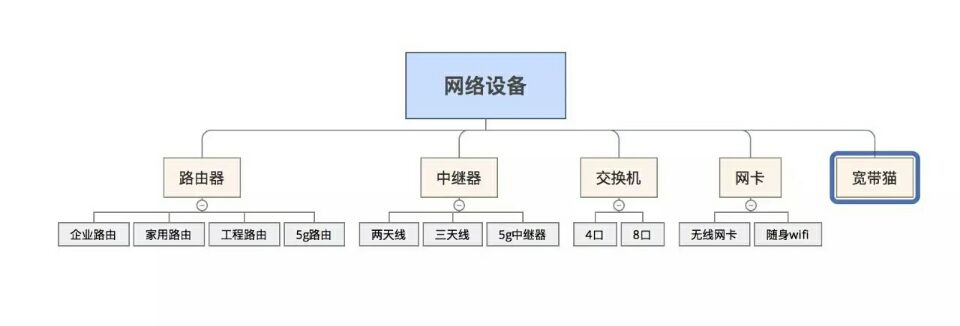When I was working with other Taobao companies last year, the other party would always ask me to ask me to tell him how I planned to build his Tmall store in the next year.
But in fact, I am not good at doing this. I personally think that I am a divergent operator. The advantage is that I can always solve problems from different angles. The disadvantage is that I don’t like to do things in the framework, and I even have “hostility” towards planning or planning.
I asked him: Why do you need a plan?
He said: Just like other large companies, they have sales targets, annual targets, quarterly targets, and then break down how much traffic and promotion are needed to go weekly, monthly or even daily, so that our company can work hard according to this goal.
I continued to ask: So what if one day we do everything we can do, but you can't achieve this goal?
He was silent...
In the book "How Google operates", the second chapter talks about strategy, the title is: Your plan is wrong, the article says: We dare to guarantee 100%. If you have an MBA-style plan and implement it resolutely according to the plan, the final result must be "implementation failure."
It’s like our science can understand how each cell works, but it cannot create a smart creature like humans, because except for the work of a single cell, the collaboration between cells and cells is tens of times more complicated. By the same token, no matter how careful you plan, you may be wrong due to some negligence or external reasons. This is why Google says that the plan must be a failure to implement.
There is almost no successful case, and success is achieved step by step according to the plan. Success and failure come from change rather than plan.
Google believes that all successful plans come from "technical insights": using technology to meet needs that users have not yet realized. The direction of planning is to use technology to achieve products to meet future needs, rather than some marketing gimmicks.
Just as Jobs said something similar, he scoffed at meeting users' existing needs because he thought users could not know exactly what they needed.
It's like, they never knew they needed a full-screen touch phone before the iPhone came out; it's like, if you asked people in an era without cars, what you need, he'll definitely tell you that they need faster horses.
It’s a bit off topic. Going back to the serious matter, it’s whether the Tmall store should make plans and how to do it?
Since "change" is more beneficial to development than plans, I do not recommend that Taobao and Tmall companies make annual plans when they come up and waste time fantasizing about the path they have to take in a year.
If Taobao and Tmall companies insist on making annual plans, we think it is based on platform resources, such as registration, stocking, products and promotional preheating, etc. of various large-scale promotions in the year, that is, know when to do what to do and make some preparations.
Of course, using plans to do things is not useless. For the company's team, this is a common direction and is helpful for team collaboration. Since the future has been changing and interacting, I personally think that the planning cycle should not be too long, preferably no more than one month.
When it comes to monthly planning, my basic idea is to "add first and subtract". First, based on the sales of the category of the category, and then combine it with your own supply chain, I draw a product matrix diagram of my own business scope. This process is to add and add all the categories and items sold in the market and their individual products.
The larger the value, the smaller the market competition. In other words, the result we want to get here is that we need to know which sub-categories are worth our efforts in the main categories of our Taobao store.

After obtaining the category matrix, we can subdivided it into specific products based on the search keywords, and then get the above picture. For example: In the search keywords of the same router, we can see different products, home, enterprise, 5g routers, engineering routers, etc.
In other words, even if you only operate a single category, you can actually do addition and list all the different needs of this single product line, just like the router single category in the picture above can also be subdivided.
After doing "addition", we go back to the search "breaking principle" we repeatedly said: a search keyword result page only displays two products in the same store. We need to understand a current situation: a single subcategory can and can only promote two products. In other words, making hot products based on search, and a subcategory can be up to two models. More than two models will have civil wars based on the principle of breaking, and this is very important to make product planning.
So at this time we have to do subtraction and trade-offs. In fact, it is often easy and pleasant to do addition. You can list all the products we can do, and then it seems that these products have brought you performance;
However, subtraction is often very painful. Each product is like its own child. In the process, we will be swaying in the product and don’t want to give up on it. In the end, no product is done particularly well.
It is not just based on the rules of Taobao search. When we make plans, we need to subtract. Even based on our thinking on the company, subtraction is an indispensable part of the plan.
When Shi Yuzhu was asked to give suggestions to small and medium-sized enterprises, he said: It is recommended that small and medium-sized enterprises concentrate all their manpower, material resources and financial resources on one product. Even if they only make one product, do not work evenly and concentrate all resources to create a point of the product.
When we run a Taobao store, it is often easy to list a product, but this "easiness" is often the most fatal to operation. Everyone will list the product like luck. If a product can be sold, thank goodness; if it cannot be sold, it doesn't matter.
From this perspective, it is easier to succeed in subtraction. The result of this product planning is that after we get the product matrix, we constantly do category subtraction first, obtain 3-5 main categories, and then continue to do subtraction from these main categories. Two main recommendation needs are selected from each subcategory. The next work is to find or create products based on the main recommendation needs. After obtaining the product, the company's resources will be tilted to these 6-10 products.
When I shared it before, I also mentioned that let everyone think about whether the operation of Tmall Taobao store should be "broad operation" or "deep operation". If it is breadth operation, we involve all products and cover everything; if it is deep operation, we narrow our product line and then each product will give more resources.
If you agree with deep operations, it is a better choice based on fierce competition in e-commerce products. Once you finish subtraction based on the product matrix, you can take out the 3-5 product lines you selected, focus on energy, and take out one day a week to focus on only one product line, such as routers on Mondays, repeaters on Tuesdays, wireless network cards on Wednesdays, etc.
The monthly Taobao store planning, that is, after the start of construction after the New Year, the result we want to get is that the store’s direct train, activity resources, and Taobao customer resources are tilted in three categories: specific products. Good steel is used on the edge. When your store level is lower, it is recommended that you choose a narrower category, and slowly expand your business scope to supplement customer needs.
Finally, the post-year plan we obtained should be the subtraction after the inventory of category products, focusing resources on the appropriate single products, and then making the company's human resources allocation plan based on the single products. Finally, when these single products are sold, the sales of the entire store are connected.
Also, this result may need to be discussed in two situations. If it is a non-standard product industry, such as women's clothing, this plan may need to be adapted. I have always felt that the products of women's clothing are not clothes, but people. The seasons, styles, uses and scenes of clothes will always change, but the crowd will always remain unchanged.
Of course, I have also seen many stores that use clothing as standard products to operate. They find styles through data, and then use operations and promotion to promote hot products. They never pay attention to whether this hot product conflicts with their own people. We do not evaluate the quality of this practice. It is like a student who only sells those pants all year round, and his monthly sales can reach 5 million.
In fact, the categories, requirements and products of standard products can be designed based on data, but clothing categories, even if you find through data that a certain group of people is very valuable and which styles will be very good, you may make money by doing them, but it is difficult to make a top store. It’s like the result in reality: the boss of a well-made large-size women’s clothing is basically a fat man himself, and the Chinese-style shopkeeper’s usual dressing style is Chinese-style.
This is also the reason why I haven't made clothes by myself so far, because I am not an opinion leader in this regard. One day in the future, Jia Zhen will start making women's clothing. He must either cooperate with an offline brand or with an opinion leader in a women's clothing, rather than just running it myself.
If you have to ask women's clothing stores to make an annual plan, in addition to considering seasonality and new launches, Jia Zhen's suggestion is: the data is for reference only, and then, be yourself unswervingly.
Thank you for your attention and support to Laogao Crown Club . Please indicate the source of the reprinting website www.shxuanming.net




![#Laogao E-commerce Newsletter# [E-commerce Morning News on January 11]](/update/1673400518l966141536.jpg)
![#Laogao E-commerce Newsletter# [E-commerce Morning News on August 4]](/update/1628042354l474706840.jpg)

 EN
EN CN
CN
